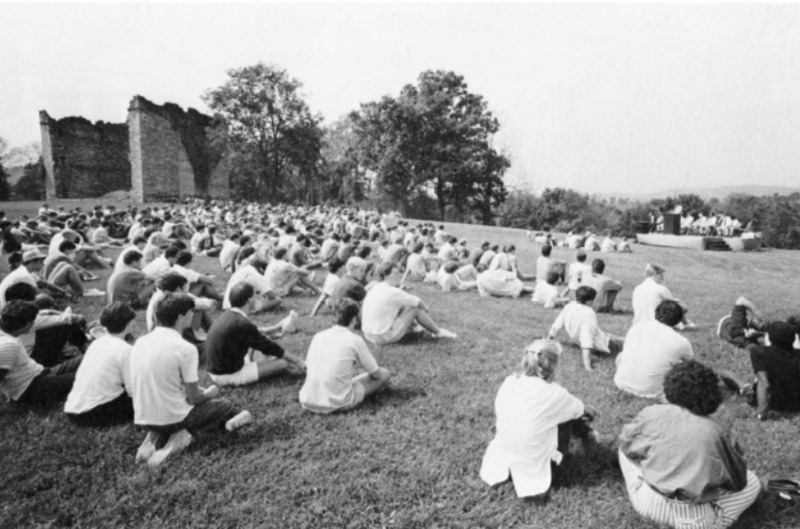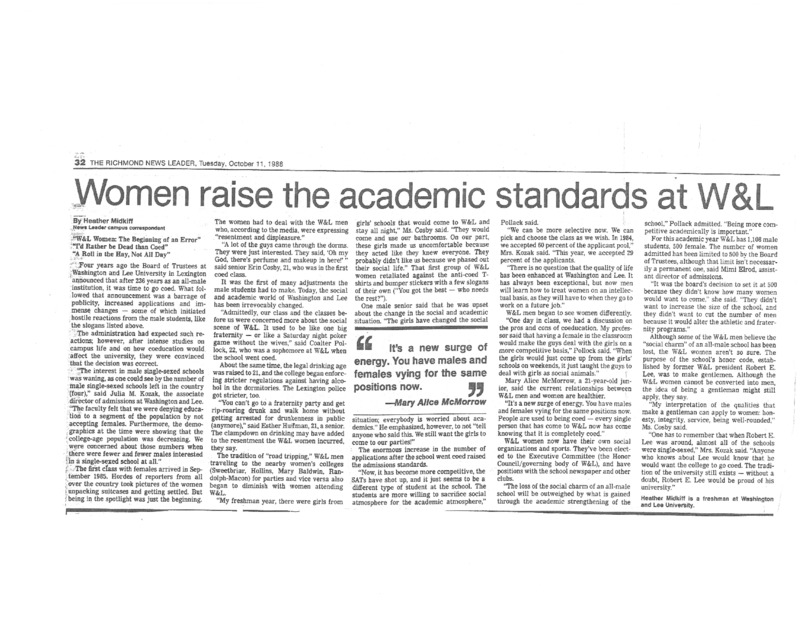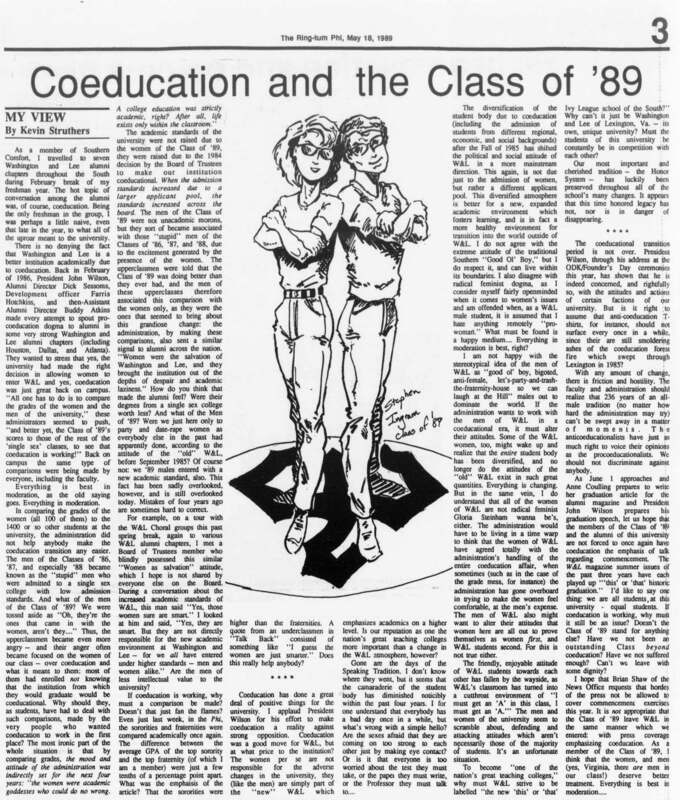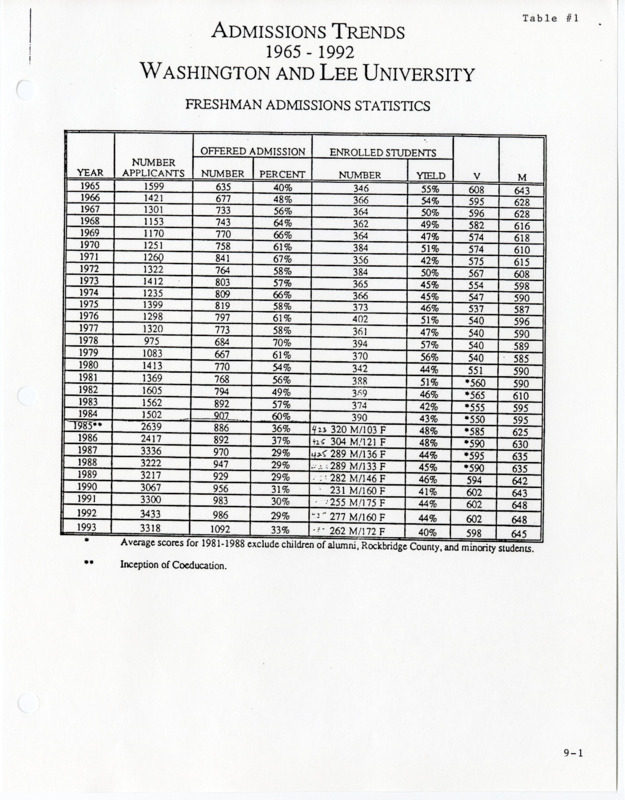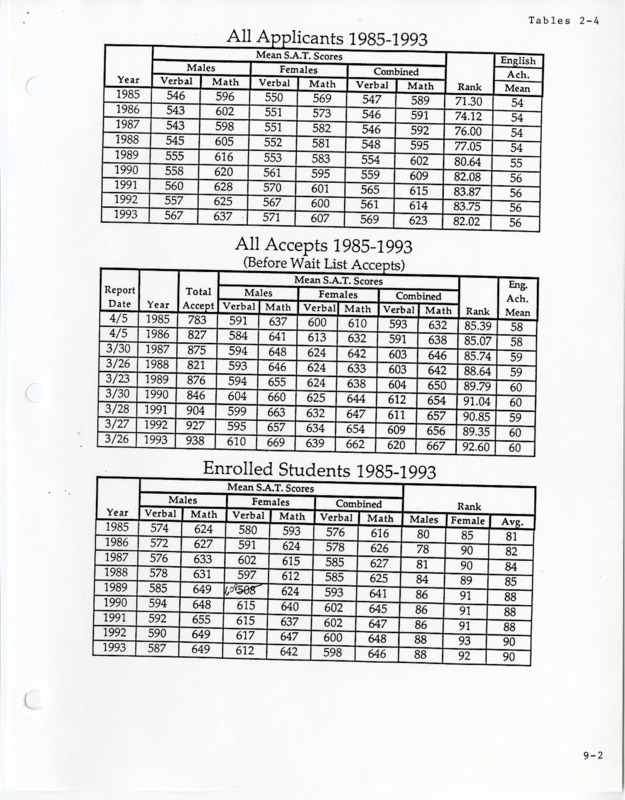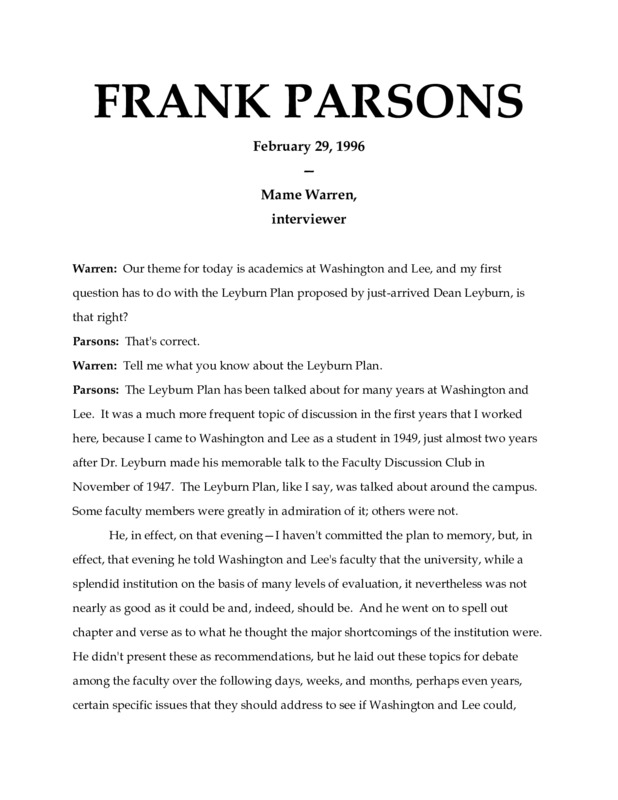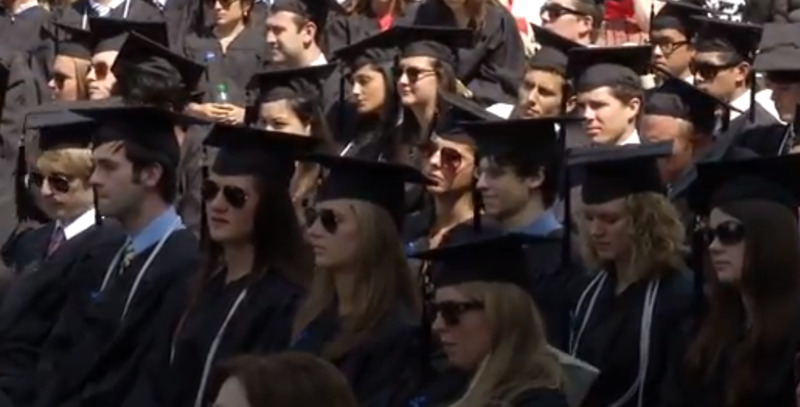While extremely contentious and controversial at the time, Washington and Lee today is a flourishing coed liberal arts university. Due to the courage of that initial class of 105 women in the fall of 1985, the academic rigor and cultural atmosphere of Washington and Lee has dramatically changed.
Shared in multiple oral histories, alumni previously opposed to coeducation have sent their daughters and granddaughters to the university demonstrating the cultural shift of opinion between both students abd alums. Washington and Lee’s seamlessly transitioned to brand itself as a more inclusive academic institution. Institutionally Washington and Lee has not changed dramatically or strayed away from university traditions that anti-Coeducation supporters feared. The honor system is still integral to academic culture, athletic program resources have grown, and the campus is still predominantly Greek-affiliated. Comparing the Class of 1984, the last all-male class, to the Class of 1985, the inaugural coeducation class admission rates, W&L admission rates went from 60% to 36% in just one admissions cycle (Admission Trends 1965-1992). Additionally, the first class of women only comprised of 24% of the entire class (Admission Trends 1965-1992). Currently, in 2023, the Class of 2027, is 52% female-identifying and the rate of admission is 17.3%.[1] To learn more culturally about female perceptions before and after the coeducation process – please check out our classmates Jennifer and Ford’s exhibit on the “Portrayal of Women in Student Publications”.
From a campus leadership position standpoint, first female classes felt like guests or outsiders to positions of student leadership, but currently in 2023 we have a female Executive Committee president, chair of the Student Judicial Council, and General Chair of the Mock Convention. Additionally, we have women in high positions of University administration with a female Provost, Dean of Students, Dean of Faculty, and Dean of Admissions. The University has made meaningful progress towards making the Washington and Lee of today one that not only supports but empower female-identifying students in their academic, social, and extracurricular endeavors.
All and all, It is important to acknowledge that coeducation itself did not insight rampant social change or drastically solve gender inequality/discrimination or by any means make the education experience equal for both men and women BUT it has made the opportunities more possible for women to flourish in civil society. The process of coeducation sent national reverberations that gender should not be an obstacle or inhibitor in the pursuit of higher knowledge.[2]
Footnotes
- ^ Washington and Lee. “New Class Profile.” Accessed December 5, 2023. https://www.wlu.edu/admissions/apply/new-class-profile/.
- ^ Malkiel, Nancy Weiss. “Keep the Damned Women Out”: The Struggle for Coeducation. The William G. Bowen Series 100. Princeton, NJ: Princeton University Press, 2016. https://doi.org/10.1515/9781400882885. 309-316.
